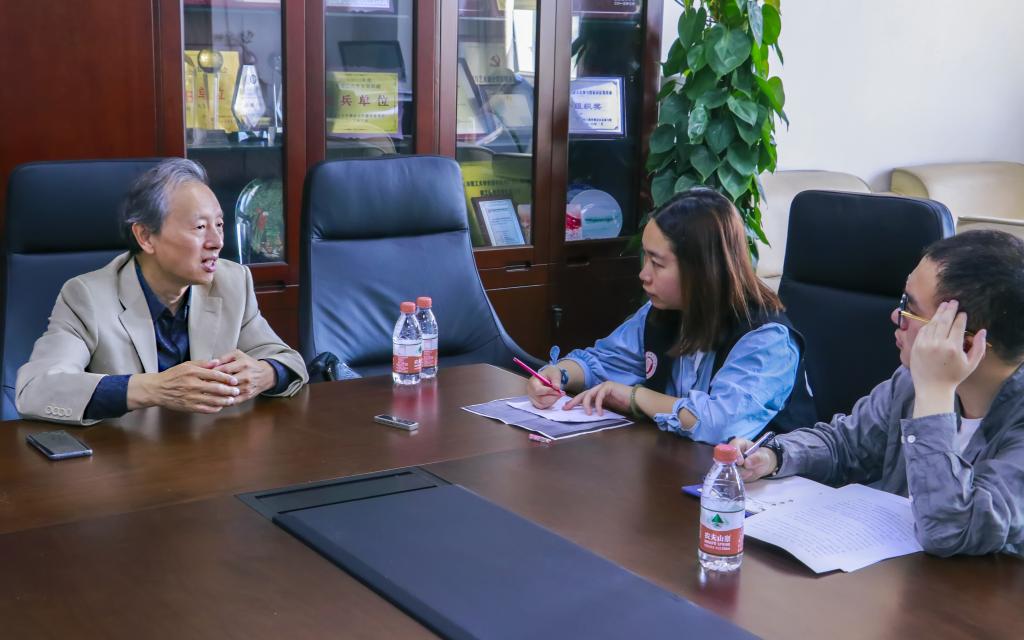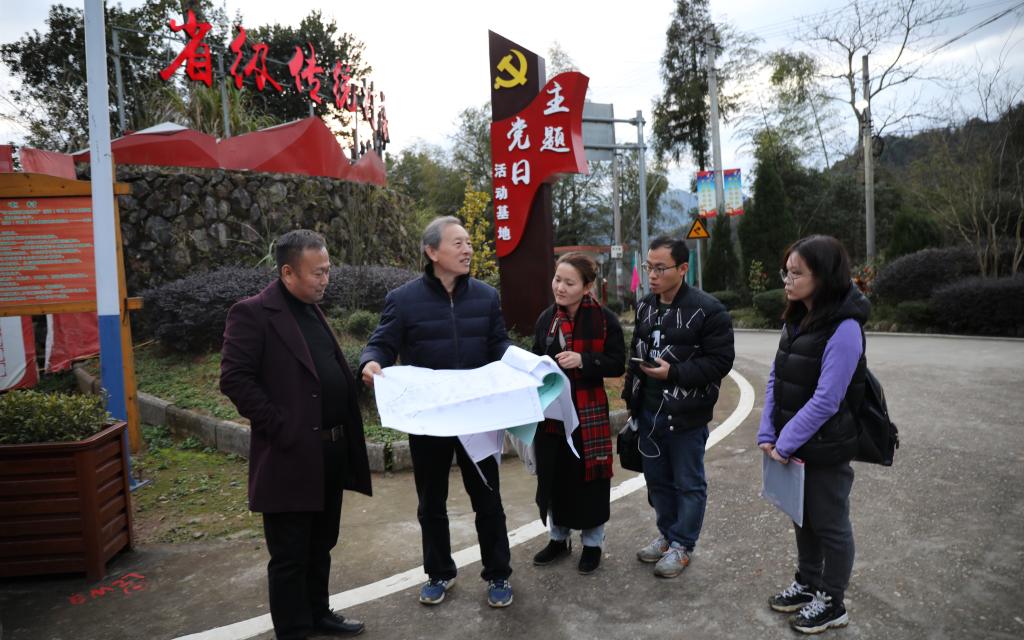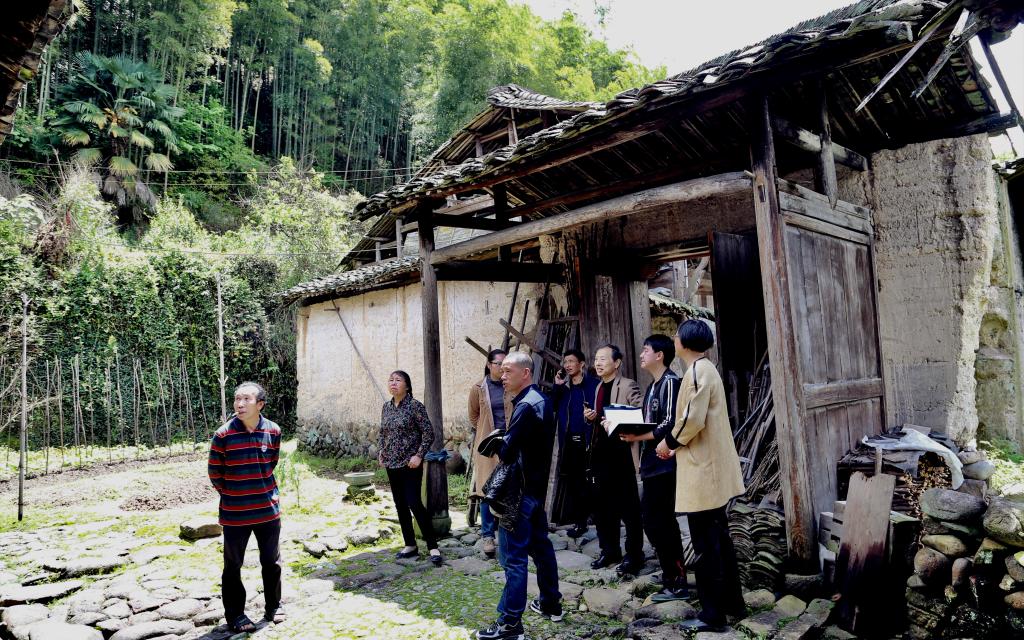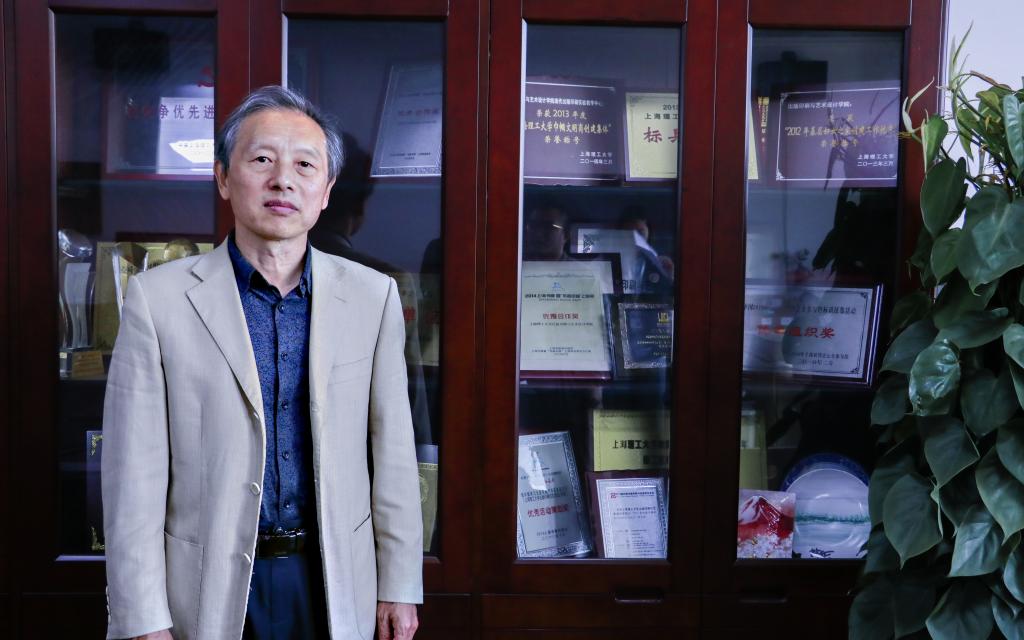On May 22, Professor Wang Yong, an environmental design expert from the College of Communication and Art Design (CCAD) at USST, accepted an interview. To customize the best plan for rural vitalization, he traveled to more than 200 villages in China in the past 10 years. The Nomination Award of “Man of the Year of Shanghai Education in 2018” was conferred on him due to his unremitting devotion to his career, reflecting the spiritual traits and academic quality of all USST’s teachers.

It can be traced back to 2008 when the Wenchuan earthquake happened and when Prof. Wang formed ties with rural design. At that time, urged by the call that was:“partner assistance of the west”, he went through the Western Countryside to carry out research on the reconstruction of the rural living environment. During this period, he witnessed the gap between the East Regions and the West Regions in China.

The 19th National Congress of CPC initiated the strategy of rural vitalization. Issues related to agriculture, rural areas, and rural people are fundamental to China as they directly maintain national stability and contribute to people’s wellbeing. Guided by the conviction that lucid waters and lush mountains are invaluable assets, China advocates the harmonious coexistence between mankind and nature, and sticks to the path of green and sustainable development. Prof. Wang’s design ideas always come with a national strategic layout.

The design for Pingyang County
Speaking of the trouble that he had in rural environmental design, he said: “We can do large-scale urban design like functional zoning design. Relatively, the design for the countryside is more complicated. The fragile ecosystem and difficulties in sewage treatment, rubbish disposal, and clean energy supplies are all problems.” The land policy and historical reasons also hindered rural design. Prof. Wang also noted: “Rural areas in China have been suffering from environmental pollution and ecological destruction caused by industrial transfer from developed regions. Therefore, a number of young people left their villages for cities, resulting in empty nesters and left-behind children. Without instant and effective steps to stop this, the situation could get worse.” Prof. Wang promotes an industrial revitalization plan. Industrial diversification is a crucial way. “Aiming at different villages, we should follow the principle of a case-by-case analysis, and design for them according to local conditions. Each village can tell its own beautiful stories. All in all, the development of the cultural creativity industry will be a panacea.”

The design for Chenshantou Village
“All designs should put people first,” Prof. Wang said. Through field exploration and mapping, he found a way of a “one village: one plan”. His environmental design for the Tengdai Village in Zhejiang Province is a typical one. Tengdai Village is the hometown of the mathematician Su Buqing, patriotic chess player Xie Xiaxun and the Southern Song Dynasty patriotic poet Lin Jingxi. “Every village has its own soul. The profound cultural connotation of Tengdai Village enables us to find out the best design ideas,” Prof. Wang said. By renovating the old houses, and constructing the supporting infrastructure for preserving and spreading rural cultures, Prof. Wang and his team made a brand-new environmental design for Tengdai Village. They successively designed the Chinese Chess King Stone Tablet and Jishan Garden and still intended to build 9 theme parks paying tribute to Math. Tengdai Village with mathematical cultures as its characteristics regained its vitality, and was awarded honorary titles such as: “Provincially Boutique Village”, “Cultural Tourism Demonstration Village”, and “Characteristic Tourism Village”. To build a mathematical culture park, he invited Prof. Cheng Taining from the Chinese Academy of Engineering, Prof. Li Daqian and another 20 mathematical experts from Fudan University to Tengdai Village for an investigation. So far, the whole village has formed an inseparable pattern of human landscape and natural scenery. Besides Tengdai Village, Prof. Wang and his team have been designing many other projects, such as an integration into the poetry and painting industry in Mingshan Village, the Red Culture Education Base in Fenglin Village and Ou kiln in Wenzhou City.

The discussion on a design program with Prof. Li Daqian
Prof. Wang often leads his students to conduct investigations into the countryside. Through countryside practices and positive guidance from Prof. Wang, his students majoring in Environmental Design gradually develop a sense of professional identity and achievements. They won the second prize in the First National Rural Planning and Design Competition in 2017, which was an incentive for them to move on for better results.

The design for Fenglin Village
At last, Prof. Wang also introduced something about his rural design plans in later days. Though he had achieved a lot in rural reconstruction, he is also still devoted to the career. “I will continue to promote rural vitalization to build a more harmonious and more livable homeland for local people,” he said.


 Home
·
News & Events
·
Content
Home
·
News & Events
·
Content

